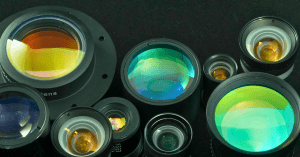Key Takeaways:
- Hyperspectral camera lenses are crucial for capturing detailed spectral information.
- The objective lens of SWIR cameras in this case study covers a broad band (1000-2500 nm) in a compact design.
- High transmittance glass suits short-wave infrared applications.
- Good color correction and close-to-diffraction-limit design improve image quality.
- Consideration of heat dissipation ensures performance in varied temperatures, making it adaptable for different environments.
Hyperspectral Imaging Technology with Short-Wave Infrared
Hyperspectral imaging technology refers to the use of a large number of continuous narrowband wavelengths for image data processing, obtaining detailed spectral information across many bands during the imaging process. It is a combination of imaging and spectroscopy technology.
Short-Wave Infrared Explained
Shortwave infrared refers to the band 1-3um. Similar to visible light imaging, short-wave infrared imaging mainly uses light reflected on the surface of an object. The reflection spectrum characteristics of different substances vary, allowing for analysis and identification based on these unique traits. Additionally, shortwave infrared has strong penetration and distinct absorption characteristics for different substances. In certain scenes, shortwave infrared lenses can reveal completely different visual characteristics compared to visible light lenses. For example, the absorption peak of water molecules in some short-wave infrared bands is very strong, and this spectral characteristic makes short-wave infrared especially sensitive to meat, vegetables, fruits and other objects, which is also an important application principle of SWIR technology in detection.
Furthermore, combining short-wave infrared technology with a hyperspectral camera can make use of the characteristics of both technologies to analyze the observed target in more detail, and play an important role in different fields.
Applications of Short-Wave Infrared Hyperspectral Cameras
Using SWIR’s strong water absorption peak, SWIR hyperspectral cameras can detect the ripeness of fruits and vegetables, check for foreign matter in meat, and monitor the health status of vegetation to assess drought conditions. Additionally, the characteristic parameters of reflection spectra of different minerals vary according to specific rules in shortwave infrared. Shortwave infrared spectroscopy can identify and classify mineral species efficiently and quickly, greatly improving the efficiency of geological exploration. Moreover, shortwave infrared hyperspectral cameras have important applications in art analysis, archaeology, drug detection, and other fields.
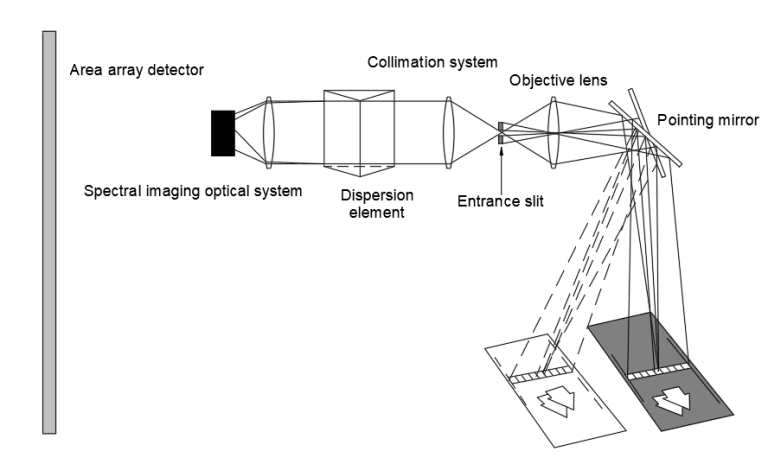
Hyperspectral Imaging Optical System
A SWIR hyperspectral camera is mainly composed of an objective lens, a spectroscopic system, and a sensor. Dispersive hyperspectral cameras generally use a grating or prism to split light. The objective lens transmits the image of the target object to the spectrometer, which obtains continuous single-wavelength spectral information through the dispersion element and then images it onto the sensor. Finally, the collected spectral data is integrated and analyzed by a computer.
Specification
Wavelength range | 1000-2500 nm |
F# | 2.8 |
EFFL | 30mm |
FOV | ±15° |
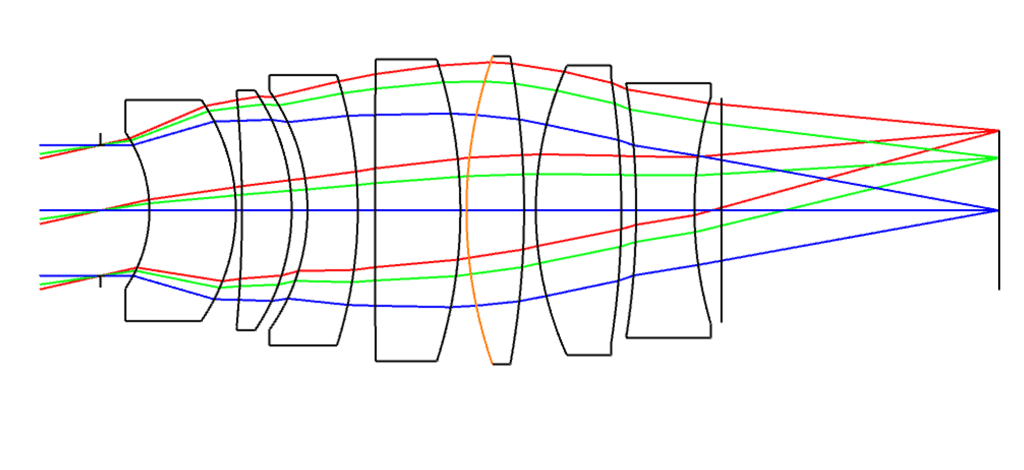
The imaging lens is an important part of a hyperspectral camera. In order to obtain more spectral information, the objective lens of the general hyperspectral camera covers a wide band, and the volume is small, which is easy to integrate. For instance, the following is a project of a short-wave infrared hyperspectral camera lens.
This objective lens covers the band of 1000-2500 nm, and the glass material has a high transmittance in this band, which is suitable for short-wave infrared applications. In addition, the design performance of the objective lens is close to the diffraction limit, and the color difference correction is good.
MTF Performance at Different Temperatures
The Modulation Transfer Function (MTF) graph is a critical measure of a lens’s ability to resolve fine details. Higher MTF values indicate better performance in terms of image sharpness and contrast.
Lens Performance Evaluation at 20°C
The Modulation Transfer Function (MTF) graph below illustrates the performance of the lens at a temperature of 20°C. Specifically, the MTF is an important measure of the lens’s ability to resolve fine details. In general, a higher MTF value indicates better performance in terms of image sharpness and contrast.
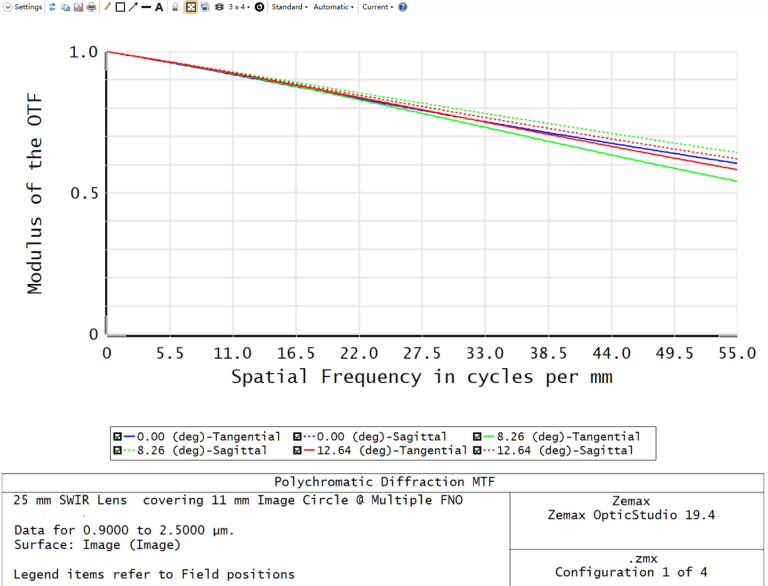
Performance Across Different Temperatures
Since hyperspectral cameras are often used in airborne environments and have a large operating temperature span, the design of the objective lens should consider the heat dissipation treatment. Moreover, the design performance at different temperatures is as follows.
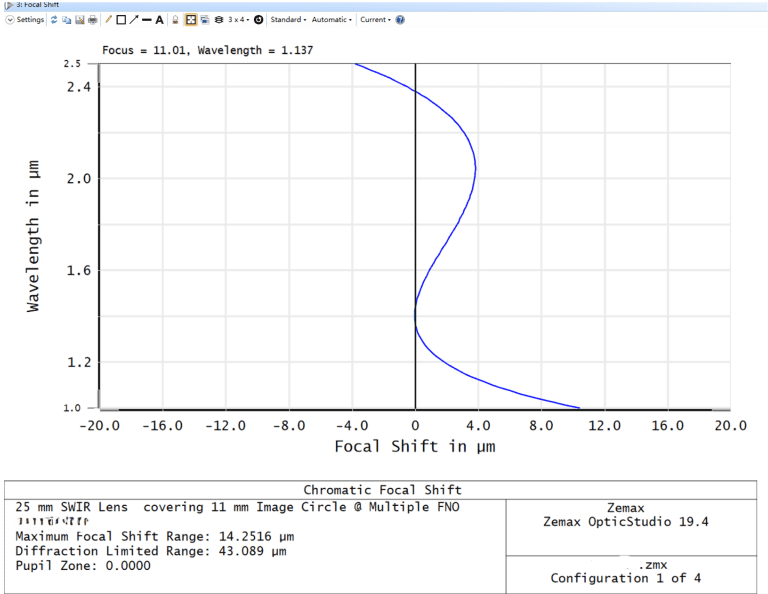
Lens Performance at Extreme Temperatures
The graphs below illustrate the lens performance at extreme temperatures of -20°C and 50°C. In particular, the MTF values indicate how well the lens maintains image quality across different spatial frequencies under varying temperature conditions.
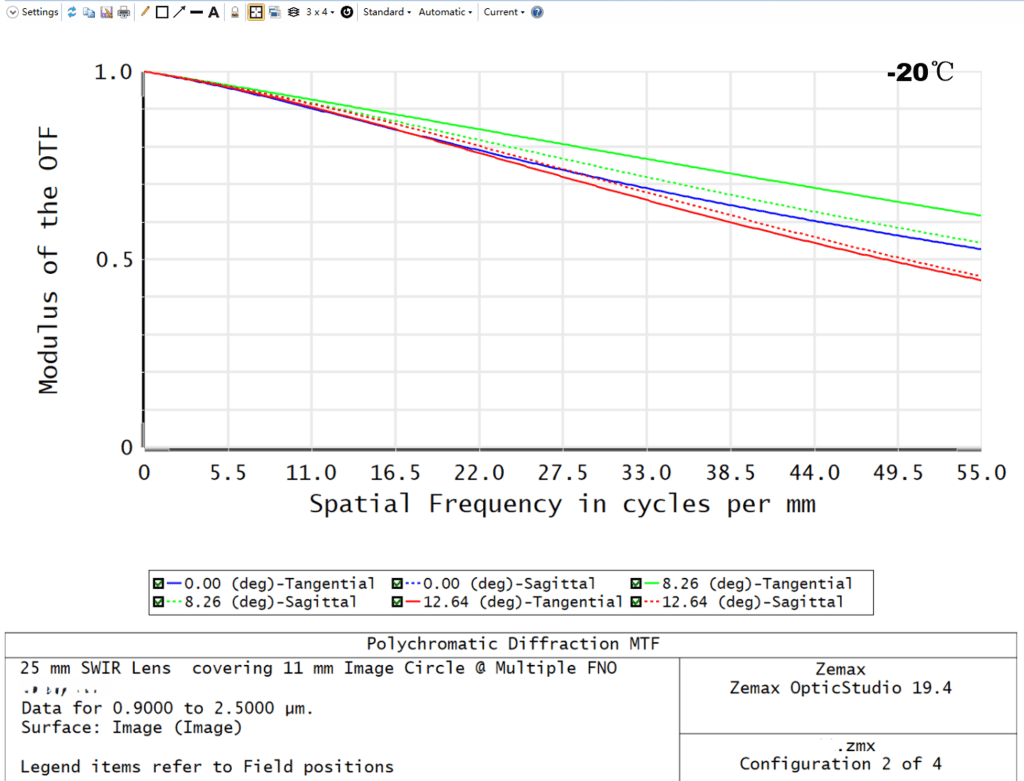
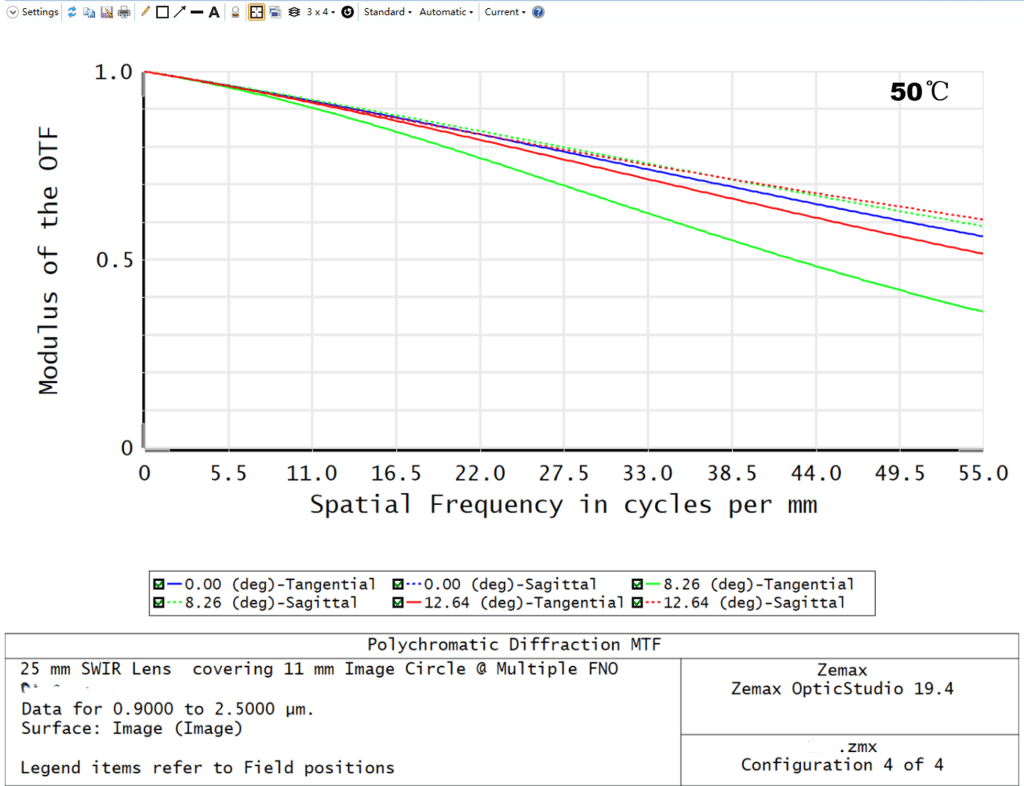
MTF@-20°C & 50°C
Versatility for SWIR hyperspectral camera lenses
With a total length of less than 50mm, this lens is compact and takes up little space. It has a field of view of ±15° and a large scanning area. Covering a wide band of 1000-2500 nm, it is suitable for shortwave infrared applications. Additionally, the thermal difference is corrected, allowing it to adapt to various temperature environments. This SWIR hyperspectral camera lens is versatile and high-performing, suitable for a wide array of applications including agricultural monitoring, geological exploration, art analysis, and more. Its ability to deliver sharp, high-contrast images under varying conditions underscores its value in detailed spectral analysis, reinforcing the critical role of hyperspectral imaging technology in modern scientific and industrial fields.
Related Content:
GREAT ARTICLE!
Share this article to gain insights from your connections!



